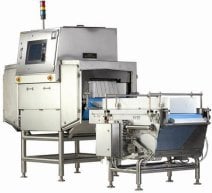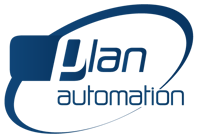 Integrating high-powered x-ray inspection systems at critical control points (CCP) along your production line may be the single most productive thing you can do with your company’s quality control processes. X-ray inspection grants product manufacturers pinpoint accuracy they just can’t get with other conventional inspection methods… but how safe is exposing your products to x-rays?
Integrating high-powered x-ray inspection systems at critical control points (CCP) along your production line may be the single most productive thing you can do with your company’s quality control processes. X-ray inspection grants product manufacturers pinpoint accuracy they just can’t get with other conventional inspection methods… but how safe is exposing your products to x-rays?
For the most part, the major concerns that companies hold toward innovative x-ray inspection technologies revolve around one taboo aspect of x-ray: radiation, and its possible effects on food and other products. To be fair, radiation and its side effects are good things to be wary of when it comes to your company’s products. Nobody wants to eat irradiated meat.
However, there’s no reason to fear for your products or radiation poisoning when integrating x-ray inspection solutions in your production line. In fact, these technologies actually promote the safety and quality of your products by mitigating contaminant risk and detecting any and all product irregularities.
How X-Ray Improves Your Product Quality
Modern x-ray inspection technologies are compatible with the production systems in virtually any food and pharmaceutical industry, and can typically return on their investment costs in short time by improving product quality, preventing costly recalls and simplifying product safety. These systems bring superior detection capabilities that just aren’t possible with other inspection techniques to manufacturers worldwide.
Any concerns over product safety and the effects of radiation are outweighed by the sweeping benefits these technologies bring when installed. For x-ray inspection of food, products being inspected are exposed to about as much radiation as contained in a jar of mussels (radiation which occurs naturally, and organically through radon gases).
As products are inspected via these units, they are typically exposed to less than 1.5 μSv (microsievert) per second; to put things into perspective, this number is less than one millionth of what the World Health Organization determined to be the maximum safe amount of radiation exposure for organic products.
Organic products (such as fruits and naturally grown vegetables) that go through highly accurate x-ray inspection retain their ‘organic’ status. That’s just how miniscule the radiation emissions of modern x-ray inspection systems are.
While some product manufacturers in the food, beverage and health industries may assume that any radiation is bad radiation, and that x-ray inspection inhibits quality and product safety, the opposite is actually true when it comes to inspection. Rather, these systems help businesses maintain their product quality and brand name by practically eliminating the risks of poor product distribution.
Once installed, these systems help manufacturers assure that no contaminants, irregularities or mismatched products ever reach distribution, in a much more reliable manner than human inspection methods. These inspection systems are effective tools in maintaining product safety, and mitigating the risks posed by:
- Missing inserts
- Broken seals or packaging
- Product count and improper mixing of products (even after packaging)
- Air products or false fill levels
X-ray inspection technologies are not only safe to use with the organic and natural products of countless industries; they can actually end up making your quality control processes simpler than ever before.
X-Ray Inspection in the Workplace
These systems are just as safe for the employees operating them as they are for the products they inspect. This is due largely to the dense, stainless steel casing these equipment solutions feature, which limit yearly external radiation levels to around 2,000 μSv; while that may seem like a large amount, it is actually less than the amount of naturally occurring radiation humans come in contact with every year (which is estimated to be around 2,400 μSv).
The reliable shielding of x-ray inspection technologies when used in production lines allow workers to carry on with regular activity while units are operational, even in the same room. Even in the event of a radiation leak or system failure, modern failsafe systems automatically shut off inspection models at the slightest signs of failure; today’s inspection systems come with zero risks to employee health or product quality.
X-ray systems can save your company thousands in recall avoidance and inspection efficiency, and have no detracting effects on organic, food and medicinal products for human consumption. These inspection solutions make it easy for product manufacturers to improve their detection speeds and assure the safety of their products in a practical, effective way.
Not only are these systems safe for your products, but they can bring to light defects and contaminants undetectable to the human eye, making your products even safer than before.
To learn more about X-Ray Inspection and how it could benefit your product line please contact us.



